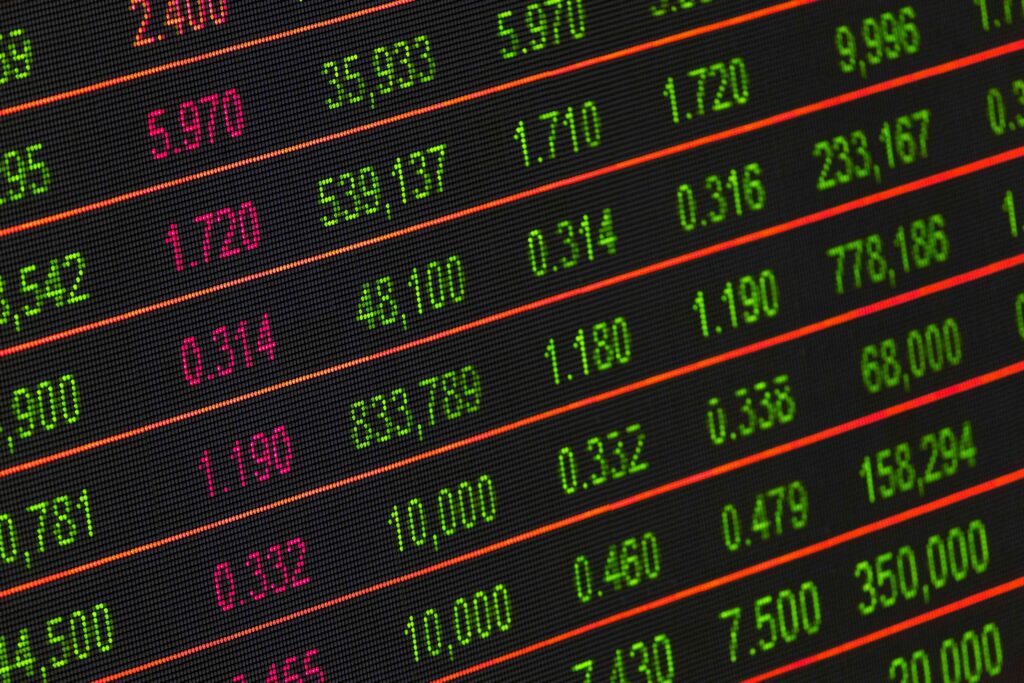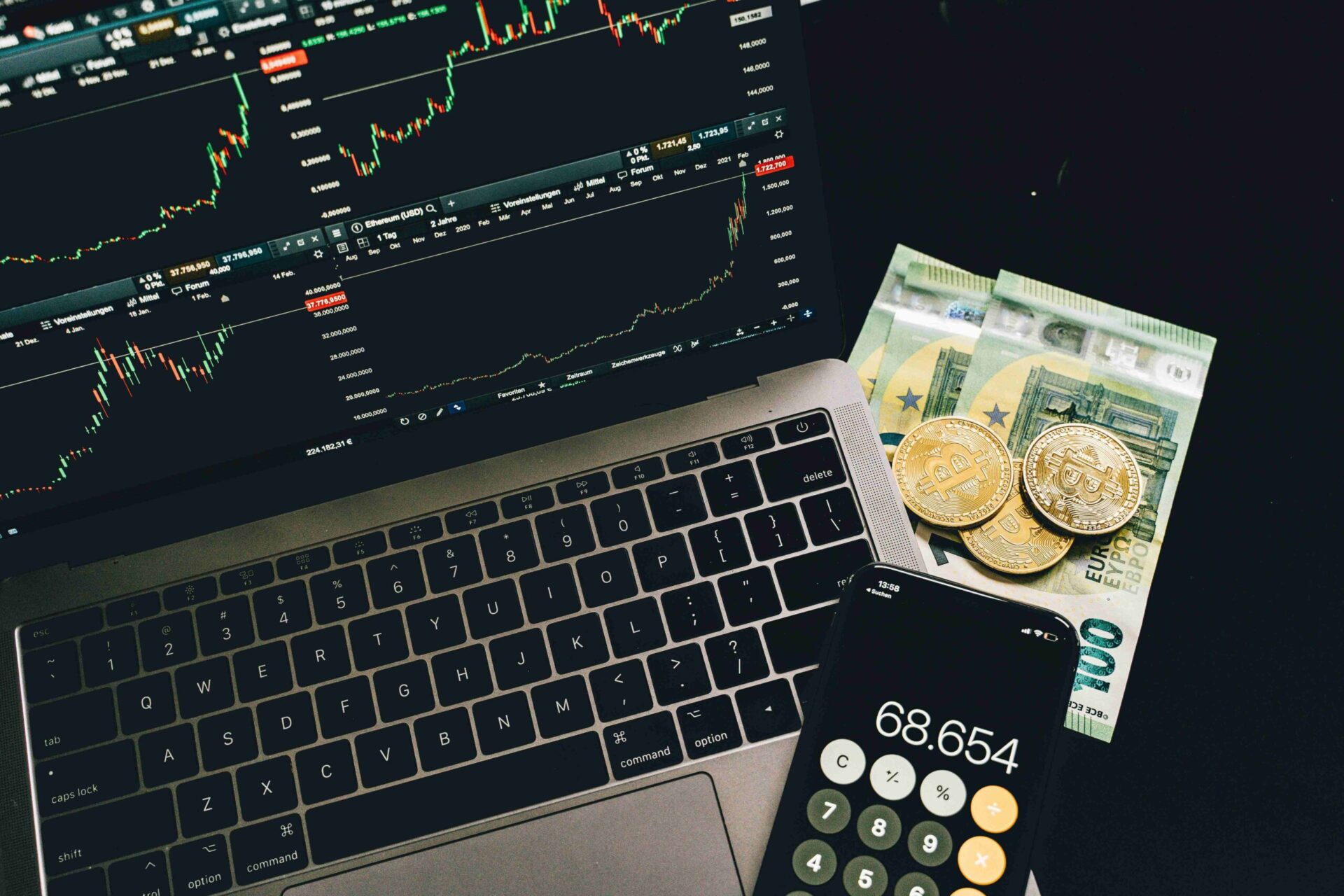Stock market rallies, CPI, Intel are under pressure—the markets are incredibly active during the second week of March 2024.
From the US CPI to the latest stock market news, Finbok analyses the biggest financial movers.
In this article, we examine the biggest trends, factors, and political news affecting the stock market.
Stock market – Federal Reserve rocking Markets
Global stocks were shaken but drifted upwards on Tuesday, March 12. This follows reports showing that US inflation was again high in February 2024, with the Federal Reserve keeping interest rates elevated longer than widely expected.
The US CPI was up a seasonally adjusted 0.4% last month from January, the US Labor Department’s Bureau of Labour Statistics reported.
This is the same pace reported for January and in line with the expected pace from economists polled by Reuters. Gasoline prices were 18.4% higher, and shelter costs jumped 0.4%.
Stock market – Dow Jones rises
The US stock market contributed to the bear mood, with the Dow Jones Industrial Average rising 0.52% to end the day at 38,971.02.
The S&P 500 rose 0.84% and the Nasdaq Composite 1.11%, even after the session’s early dip.
Consistent with the inflation data, 10-year Treasury yields advanced once trading began: the yield on 10-year notes rose 3.5 basis points to 4.139% and the yield on the 2-year note went up 4.8 basis points to 4.5821%.
Fed rate cuts on the way?
For the Fed’s interest rate cuts, the bulk of forward market projections remained steady, with a roughly two-thirds chance that at least a 25 basis points cut will come by June 2024 according to the CME’s FedWatch Tool.
Internationally, the MSCI’s world stock index climbed 0.64%. Europe’s STOXX 600 and FTSEurofirst 300 indices also saw good performance, lifting the Euro stock market.
It rallied on the back of the inflation report, while both the euro and Japan’s yen depreciated against the dollar.
The jump in the Yen was accentuated by comments from its central bank’s governor, Haruhiko Kuroda that painted a gloomy economic picture and dampened expectations that negative interest rates would soon end in Japan.
Capping it off, the British pound sagged after reports that wage growth in the UK had cooled, which is likely to pile the pressure on the Bank of England to cut rates even further.
Commodities market
On the commodities market, US crude and Brent both gained ground with the support of OPEC’s steady outlook for growth, wrought by Middle East tensions and other global factors.
The momentum of February’s stock market rally lost some steam in March. This comes after the latest reports showed an increasingly robust economy continuing to face challenging inflation.
Commodities Trading: 8 Positive Strategies for Success
This prompted stock market traders to bring forward expectations that the Federal Reserve would lower interest rates for the first time from March to June.

Stock market: Major indices see gains
Positive gains were logged across all three major indices: the Dow Jones Industrial Average inched up 0.01% to 38,773.30; the S&P 500 crept up 0.16% to 5,126.04; and the Nasdaq Composite bumped up 0.15% to 16,043.59.
The industrial sector, up 2.6%, the small-cap Russell 2000 index, climbing 2.8%, along with the transportation index, and the technology sector, rising 2%, were the biggest winners.
Meanwhile, utilities were the biggest losers among the major S&P 500 sectors, down 0.4%, and technology stocks sensitive to interest rate swings added 0.5% to curb the broader market losses.
Stock market winners & losers – March 12
Major computer software company Oracle rose 10.7%, boosted in part by positive news about its bid to expand its offering in cloud computing on the back of a partnership with AI chip-maker leader Nvidia.
Forex Trading: 5 Ultimate Key FX Strategies to Thrive in SA
Boeing fell 4.1% after its Federal Aviation Administration audit detailed many problems with the production of its 737 MAX aircraft.
Southwest Airlines’ shares plummeted 12.9% after it warned it would take fewer Boeing MAX aircraft than expected this year and that it would have to reduce capacity next year.
Meanwhile, shares in 3M jumped by 5.8% after the manufacturer said William Brown would be its new CEO, effective from May 1.
Markets – Treasury Yields
On the NYSE, stocks falling outnumbered advancing ones by 1.43-to-1, and on the Nasdaq, it was 1.59-to-1.
The S&P index recorded new “52-week” highs but no new lows.
On March 12, US Treasury yields saw only a minimal rise as the market digested key inflation news that came in as expected, boosting confidence that the Fed will hold off on a rate cut until late in the year.
In particular, the yield on the 10-year Treasury note rose 4 basis points to 4.139%, and the yield on the 2-year Treasury note also climbed 4.8 basis points higher to 4.58%.
It’s important to note that bonds perform the opposite of stocks, so their prices and yields move in opposite directions, with one basis point equating to exactly 0.01%.
Stock Market – US eyes CPI data
Data from the US Labor Department’s Bureau of Labor Statistics on the consumer price index (CPI) for February show that the index rose by 0.4% for the month and 3.2% for the year, in line with median expectations of Dow Jones analysts.
The so-called “core CPI,” which excludes the volatile food and energy categories, also rose 0.4% in November and 3.8% year-over-year, a tad more than economists had expected.
Despite a decline since the peak in November 2023, the pace of annual inflation continues to exceed the Fed’s 2% goal.
This suggests that bringing inflation down to the target level could prove highly difficult.
Currently, market traders are betting on the first rate cut to arrive in June.
Fed rate by mid-2024?
In March 2024, Jerome Powell, chairman of the Federal Reserve, suggested that he would soon cut rates, but emphasized that more evidence of a return to the central bank’s target of 2% inflation was required.
These come ahead of the February producer price index due out on March 14, which, along with other key economic indicators, will be closely reviewed by Fed officials in the days before their policy meeting next week.
Stock Market – Big Boost for Goldman Sachs
Goldman Sachs could double its current $130 billion private credit portfolio to $300 billion, dwarfing competitors.
Competitors are all boosting their portfolios.
Morgan Stanley’s private credit portfolio will increase to $50 billion in the medium term; JPMorgan Chase has pledged at least $10 billion to private credit; and Wells Fargo and Citigroup are building out their market participation through partnerships.
Stock market – Goldman on the up
Goldman also expects to devote at least a third of the $40 billion to $50 billion it’s hoping to raise in alternative investments this year to private credit strategies.
Big banks have leaned into shadow banking’s recent growth spurt in shadow-lending activities—investment firms with fewer regulatory restraints than traditional banks — and are bulking up their private credit operations through loan funds and partnerships with private equity firms and asset managers.
Goldman Sachs has been active in the private credit market for nearly 30 years.
Its private credit business straddles numerous private credit strategies to address different investor needs within companies.
Stock market – Goldman Sachs opportunity with traders
The company is pushing forward asset and wealth management as central segments for the future.
Consumer banking is a mere recent and very costly mistake now firmly behind them, and comprising just under 10% of Goldman’s revenue.
It is investment banking and trading that underpin the group’s growth.
Meanwhile, another strategic imperative involves growing the wealth management business with an emphasis on ultra-high-net-worth clients in Europe and Asia, where they aim to double the international business.
Here again, the bank sees a considerable opportunity, with a lending-to-client-assets ratio of 3% (versus a peer average of 9%) indicating the tremendous potential for growth.
Stock market – Intel survives huge Chinese pressure
Intel has been able to maintain its half-billion-dollar chip sales to Huawei despite efforts underway to block those deals, reports Bloomberg.
This latest move gives one of the biggest chipmakers more time to continue its business dealings with the Chinese telecom giant which is under heavy sanctions.
The Biden administration has seen pressure to revoke a license granted under the Trump administration that allows Intel to continue deliveries of more advanced central processors to Huawei for use in laptops.
Some of this pressure has stemmed from Intel’s competitor, Advanced Micro Devices (AMD), which accused the company of fighting for a license while it blocked AMD from securing a similar license for Huawei stake sales of its own chips.
Other stakeholders and lawmakers have advocated for even more aggressive actions against China and have urged companies to cease all sales.
Intel’s continued license despite AMD’s lack of one underscores just how maddening the environment is for businesses navigating US attempts to deny Beijing access to the most sophisticated US technology.
It has also made it possible for Huawei to keep its share in the global laptop market, and to take sales away from AMD.
Stock market – ‘economic bullying’
The Chinese Embassy decried restrictions on Huawei as ‘economic bullying’, calling on the US to ‘stop abusing national security [as] an excuse to suppress Chinese companies’.
The company was placed on a US trade restriction list in 2019 by the Trump administration, which charged Huawei with sanctions violations. The Chinese tech giant has denied this.
Being on this list effectively bars US suppliers from selling to the blacklisted firm.
Trump’s presidency later granted special permission to some US suppliers, like Intel, to sell some items to Huawei. AMD never heard back on its licensing request deadline under the Biden administration.
Allowing only Intel a license, and not competing firm AMD, pushed Huawei laptops powered by AMD to just more than 9.3% of the market (from 47.1% in 2020), with estimates of a $670 million loss in revenue for AMD versus Intel over time.
Intel’s license is expected to expire later this year, when it won’t likely be renewed.
In the meantime, Huawei keeps using Intel chips for its laptops, helping it increase its share of the Chinese laptop market. In 2024, the company overtook Dell to become the third-largest PC manufacturer in the country.







